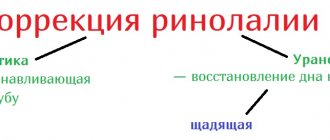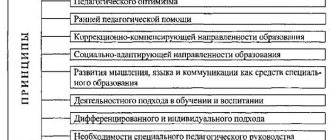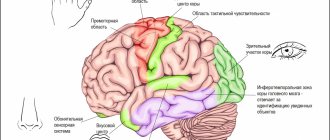Symptoms of the disease
The symptoms of pseudobulbar dysarthria depend on the severity, of which there are only four:
- 1st degree – there are no pronounced speech defects, which can be identified by a speech therapist.
- 2nd degree – the child’s speech is understandable, but some speech disorders are noticeable.
- 3rd degree – speech is incomprehensible to people around, including loved ones.
- 4th degree – the patient’s speech is not completely understandable.
The general symptoms of this form of dysarthria have some components:
- distorted syllables, sounds;
- hypertonicity of the facial muscles;
- limited mobility of the tongue and lips;
- increased salivation;
- weak quiet voice;
- arrhythmia of breathing.
A diagnosis of “pseudobulbar dysarthria” can only be made by a speech therapist or neurologist based on certain research results.
Features of severe dysarthria
What is grade 3 dysarthria, and what its manifestations are, is easy to understand, since in severe dysarthria, the sound production function is completely or almost completely absent.
Level 3 dysarthria is characterized by the absence of speech function, mask-like facial expression, drooling, and severe disorders of chewing and swallowing. The patient's mouth is constantly open, the tongue does not move. Children are educated in special schools, where they master general education subjects according to an individual program.
Causes of speech impairment
Speech disorders occur when the pathways between the bulbar nerves and the cerebral cortex are damaged. This can occur for a number of reasons:
- Cerebrovascular disorders. These are strokes, cerebral ischemia, cerebral atherosclerosis. These diseases often lead to the development of pseudobulbar disorders, leading to disorders of the speech apparatus.
- Head injury. This reason is most common for children over one year of age.
- Perinatal pathology. This group includes fetal hypoxia, intrauterine infections, and birth trauma. As a result of these processes, functional corticobulbar disorders occur.
- Neuroinfections.
For all these reasons, with pseudobulbar dysarthria, the structure of the speech defect suffers and is disrupted.
Forms of pseudobulbar dysarthria
There are three forms of this type of dysarthria:
- spastic (spasmodic);
- paretic;
- mixed (that is, spastic-paratic).
Each of these forms has its own symptoms and treatment features.
Spastic form of pseudobulbar dysarthria
This form of pseudobulbar dysarthria is characterized by tension of the respiratory muscles or hyperkinesia of the larynx, spastic paresis of the lingual muscle, tension of the labial muscles and impaired tone of the palate.
Such manifestations make speech more monotonous, with a nasal tone. It is difficult for a child to maintain articulatory postures, there are difficulties in switching them, and the breathing process may take a long time, which leads to problems in voice formation (articulation). With pseudobulbar dysarthria, the following characteristic phenomena are observed:
- silent articulation;
- there is no prolonged rest of the speech muscles;
- spasms of the labial muscles;
- tension when smiling;
- limited tongue movements;
- disturbances in sucking and swallowing movements are observed;
Often in children with this disorder, the first cry is absent, and breathing is pronouncedly weak and arrhythmic, there is a weak short exhalation, and speech occurs while inhaling. This species is also characterized by the presence of speech phonations, a weak, quiet voice, the rate of speech is fast, but its rhythm is not maintained. In other words, someone who has a spastic form of pseudobulbar dysarthria speaks from spasm to spasm, which leads to the use of short phrases with poor intelligibility, depending on the strength of the voice. At the same time, the meaning of what was said does not suffer.
Paretic form of pseudobulbar dysarthria
This form is observed with hypotonia of the speech and skeletal muscles. The child has pareticity of the tongue, lips, and palate. There is difficulty in switching articulatory postures, asynchrony in breathing and articulatory movements. Often such a child may have increased salivation (salivation).
The inhalation during conversation is short and inadequate, and the exhalation is also weak. The voice itself is loud, ringing, but quickly fading. Speech in this case has a nasal pronunciation, weak and quiet. Some isolated sounds are completely preserved, but in the speech stream they are blurred. Eating is at a disturbed pace and there are difficulties in coordinating chewing movements.
Mixed form
This form is the most common. In the scientific literature it is called spastic-paretic syndrome. With it, there is hypertonicity of one muscle group, for example, the muscles of the lips and cheeks, while the tongue has reduced tone.
Main features
If a child has a speech disorder such as dysarthria, then his articulatory muscles will be in a state of hypotonia. This makes speech unclear and also causes other problems caused by bulbar disorders.
Among the most common symptoms of dysarthria are the following:
- The lips are in an open state, the tongue spontaneously falls out.
- Lips closed too tightly. This manifestation is caused by spasm of the muscles of the articulatory apparatus.
- Flaccid or inactive tongue (with dystonia of articulatory muscles).
- Problems with swallowing and chewing food, excessive salivation and inability to swallow food, as well as other bulbar disorders.
- Speech development at an early age does not correspond to the norm (the baby does not babble, the first words appear after 2 years, etc.).
- The child does not suffer from ENT diseases, but still speaks through his nose. Nasal tint occurs due to low mobility of the palate. The air stream does not encounter any obstacles on its path and freely enters the nasal passages.
- Improper speech breathing, difficulty pronouncing long phrases, frequent pauses in speech, etc.
- The speech lacks melody, it is too drawn out or, conversely, fast.
- Distortion, substitution or omission of sounds.
- Too high, squeaky voice.
- Impaired fine motor skills. Dysarthria in children is manifested by the inability to fasten buttons, reluctance to assemble small construction sets, etc.
In severe forms of dysarthria due to paralysis of the speech muscles, complete muteness may be observed. This condition is called anarthria.
All manifestations of dysarthria are usually very persistent and difficult to correct.
Diagnosis of pseudobulbar dysarthria
The patient should be managed by a speech therapist, neurologist and other specialized medical specialists. For accurate diagnosis, the following research methods are used:
- speech therapy speech study;
- electroencephalography;
- electromyography;
- MRI of the head.
In some cases, a study of cerebrospinal fluid by lumbar puncture may be prescribed. This analysis identifies neuroinfectious causes. A neurologist should participate in the diagnosis. They must undergo an examination, special tests, and a study of the child’s motor skills and facial expressions. These methods make it possible to assess the degree, type, and causes of the disorder, and also, based on the data obtained, formulate an effective treatment program.
Treatment of pseudobulbar dysarthria
Corrective work is based on speech therapy sessions and exercises. They are carried out under the supervision of a specialist and are aimed at developing fine and speech motor skills. In some cases, drug treatment may be used. General correction of this form of dysarthria consists of:
- physiotherapy;
- therapeutic physical culture;
- taking baths;
- reflexology and others.
Nootropics are used for drug treatment. It is important to understand that early diagnosis is extremely important in this matter. All therapeutic measures of the correction program should be prescribed exclusively by a specialist; self-medication can be dangerous.
For correction, etiopathogenetic treatment is used. It eliminates the etiological factors of speech development. If dysarthria is caused by neuroinfections, it is necessary to prescribe antiviral and antibacterial therapy. Treatment methods depend on the causes of this speech disorder.
An important part is special speech therapy classes. For hypertonicity, speech therapy massage, breathing exercises and other exercises can be used. This part of the correction is aimed at obtaining fluency of speech, its emotionality and expressiveness.
Erased dysarthria in children
Erased dysarthria, as mentioned earlier, is the first degree of severity of dysarthria. With this disorder, mild disorders of the phonetic and prosodic (voice strength, tempo, rhythm, intonation) components of speech are observed. These disorders are caused by insufficient supply (innervation) of the articulatory organs with nerve cells.
The following characteristics of this speech defect are noted:
- unclear articulation;
- distortion of sounds of several phonetic groups;
- complexity of automation;
- unimpressive speech.
Correction of erased speech dysarthria involves the use of articulation, breathing and finger exercises, as well as speech therapy massage. Particular emphasis is placed on automating evoked sounds and normalizing prosody. Classes with a speech therapist are carried out in parallel with treatment by a neurologist. When treating, it is necessary to take into account the characteristics of dysarthria - the severity of the pathology, its type, as well as the level of speech development of the child.
Difference between bulbar dysarthria and pseudobulbar dysarthria table
The main differences between bulbar dysarthria and pseudobulbar dysarthria are as follows:
- They differ in the characteristics of paralysis of the speech muscles. With the bulbar type, peripheral paresis is observed, and with pseudobulbar paresis it is central.
- With bulbar, voluntary and involuntary movements of speech motor skills are disrupted. With pseudobulbar, only voluntary sounds are affected.
- With bulbar dysarthria, diffuse articulatory motor skills are affected, and in the second type, a selective nature of the violation of articulatory movements is observed.
There are also differences in sound pronunciation. The bulbar type makes the pronunciation of vowels neutral.
Possible complications
Speech impairments make it difficult, and in some cases completely eliminate, communication with other people. Understanding the presence of a problem with articulation, the inability to convey information to others negatively affects overall mental health, and can also lead to neurotic disorders such as neurasthenia, depression and others. With dysarthria, difficulty eating is often observed. A person often chokes on food and water, which can lead to asphyxia or aspiration pneumonia.
Children suffering from pseudobulbar dysarthria often experience general speech underdevelopment (GSD), which in turn is dangerous due to dyslexia and dysgraphia. Children with a mild form may encounter problems at school (communicating with teachers and classmates). Children with moderate and severe forms are trained in specialized schools. If correctional work is not carried out with the child on time, there is a likely risk of developing intellectual disability and general mental retardation.
How to recognize dysarthria
Despite the fact that dysarthria is a very complex speech disorder, it can still be corrected, especially if we are talking about an erased form of the disorder.
Dysarthria can be recognized from the first days of a child’s life, and parents should be wary of the following points:
- When breastfeeding, weak nipple latching and sucking reflex may indicate weakness of the muscles of the articulatory apparatus. Milk leaks from the mouth and even the nose;
- The child, later than his peers, begins to hold his head up (5-7 months), try to sit up and crawl (8-11 months), and walk (after 18 months);
- the child develops speech late, sounds are monotonous, articulation is unexpressed;
- increased salivation. The child cannot swallow his own saliva due to flaccid muscles of the tongue, cheeks and lips. The mouth is always open;
- problems with drinking from a cup, chewing food;
- lack of substantive activity. The baby does not show interest in toys, his actions with them are inadequate or inappropriate for his age;
- The baby does not react to loved ones and does not show joy. There is no smiling, walking, or motor activity of the arms and legs.
At a later age, dysarthria may be indicated by disturbances in breathing and speech rhythm.
A child, when talking, pronounces words with different volumes and intonations or in syllables. With dysarthria, a nasal sound appears. Due to the increased tone of the articulatory muscles, the child may get tired during the conversation. In addition to speech disorders, dysarthria also causes motor disorders. The child may grasp objects too strongly or weakly. The grasp reflex may be absent altogether. Spatial and visual and spatial perception are also affected. The child cannot correctly determine the shape and size of an object, for example, when playing with various sorters or pyramids. Difficulties arise when performing physical exercises.
Fine motor skills are especially affected in dysarthric children. It has long been proven that there is a relationship between the ability to perform precise coordinated movements of the hands, the development of speech and mental perception. Insufficiency of the motor part of the brain leads to the fact that it is very difficult for a child to perform pincer grasp with fingers, or it is not performed at all. In erased forms of dysarthric disorder, the development of fine motor skills helps to quickly “launch” speech.
Children who have a history of pathologies associated with the prenatal and birth periods are required to be observed by a pediatric neurologist. The doctor should pay attention to existing problems. If pronounced deviations in the baby’s development are not observed, then he is removed from the register.
Further monitoring of the child's condition is carried out by his parents. When the first alarming symptoms appear, it is better to immediately contact a specialist.







